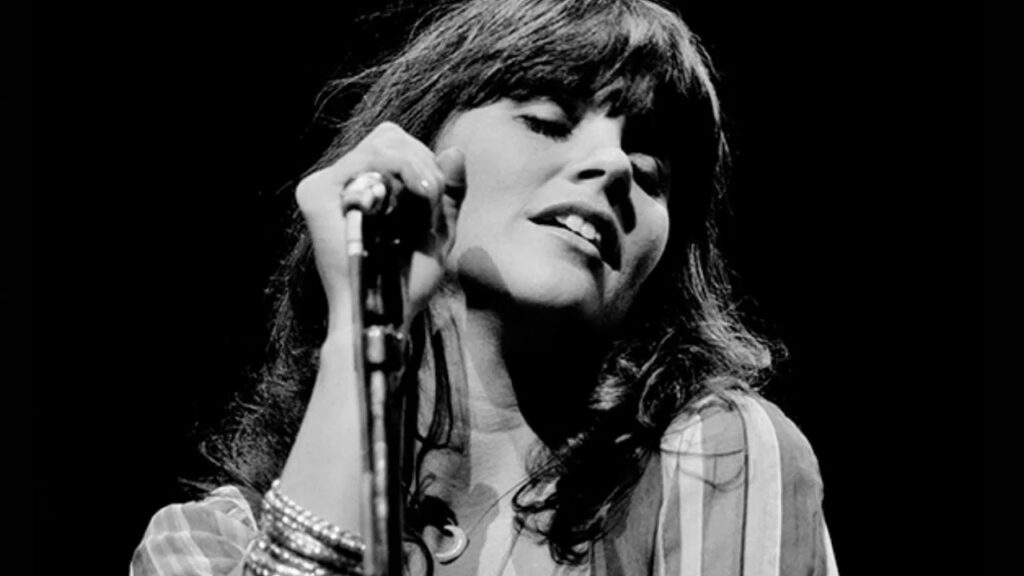
“Old Paint” — a frontier lullaby turned bedside prayer, where a great voice rides a small, steadfast melody home
In 1977, Linda Ronstadt closed her blockbuster album Simple Dreams with “Old Paint,” a spare, traditional cowboy song credited as “Traditional; arranged by Linda Ronstadt.” It’s the last track on the record—three unhurried minutes that arrive like lamplight after a dazzled evening—on an LP that spent five straight weeks at No. 1 on the Billboard 200 in late 1977. As a recording, “Old Paint” wasn’t a chart single on its own, but many listeners first met it as the B-side to Ronstadt’s smash “Blue Bayou,” which peaked at No. 3 on the Hot 100 and No. 2 on the country chart. Those release-day facts matter because they frame the song’s role: a quiet companion riding in the slipstream of a cultural phenomenon.
Historically, the piece is the folk evergreen “I Ride an Old Paint,” first published by Carl Sandburg in The American Songbag (1927). Its trail-born language—“I ride an old paint, I lead an old dam”; “to throw the hoolihan”—carries the dust of a working West: a “paint” is a spotted horse, a “dam” is a mare, and a “hoolihan” is a backhand loop with a lariat. Ronstadt keeps those plainspoken terms intact, letting their textures do the storytelling while her phrasing softens the edges. The result is neither pastiche nor museum piece; it’s memory, sung in a living room voice.
On Simple Dreams, “Old Paint” sits after all the neon—the Buddy Holly adrenaline of “It’s So Easy,” the Warren Zevon grit, the Stones swagger of “Tumbling Dice,” the widescreen ache of “Blue Bayou.” Then comes this unadorned closer, the album’s deep breath. The sequencing is no accident: it returns the record to stillness, to a single rider in a wide frame. That LP itself was a juggernaut, dethroning Rumours and topping both the pop and country album charts; in that blaze, “Old Paint” became many listeners’ secret favorite, the track you waited for when the house fell quiet.
Part of its spell is the home-made feel of the arrangement. Liner-note sources list Ronstadt on acoustic guitar and Mike Auldridge on dobro, the latter’s slide voice sighing like wind over sagebrush. No grand drama, just grain and light: the guitar’s small circle, the dobro’s answering glow, a vocal set barely above conversation. Ronstadt’s interpretive gift was always clarity without coldness; here she sings like someone protecting a flame. The credit line—Traditional, arranged by Linda Ronstadt—says what your ear hears: a song polished not to sparkle but to last.
And there’s that B-side story. When “Blue Bayou” rolled across radio and jukeboxes in late 1977, copies of the single carried “Old Paint” on the flip. It’s a pairing that tells you how Ronstadt understood her own record: the A-side is luminous longing, cinematic and tidal; the B-side is small-room solace, a lullaby for people who still had dishes to wash and a morning to meet. Even as “Blue Bayou” climbed to the Hot 100’s Top 3, the humble cowboy tune kept turning on turntables everywhere, reminding you that comfort often lives on the back of grandeur.
What does “Old Paint” mean in her hands? It’s a song about staying in motion and finding rest at the same time. The rider points his horse “to Montana,” but the cadence is bedtime-slow, as if the miles are measured inside a heart rather than on a map. In Ronstadt’s reading, the frontier is interior—a place where sorrow loosens its jaw and memory yokes itself to something gentle. She doesn’t dramatize the words; she steadies them. This is what makes the track feel so personal to listeners who have traveled far, in years if not in miles: the recognition that endurance can be tender, and that old songs can carry us when our own words fall short.
Placed beside the career headlines—Simple Dreams at No. 1, the singles roaring up the charts—“Old Paint” is the quiet truth in the center of the room. It shows Linda Ronstadt at her most intimate: a master singer choosing restraint, trusting history, and letting a century-old melody do its human work. Long after the applause fades, this is the cut that tucks you in and turns down the light—a small, sturdy hymn that rides with you until sleep.